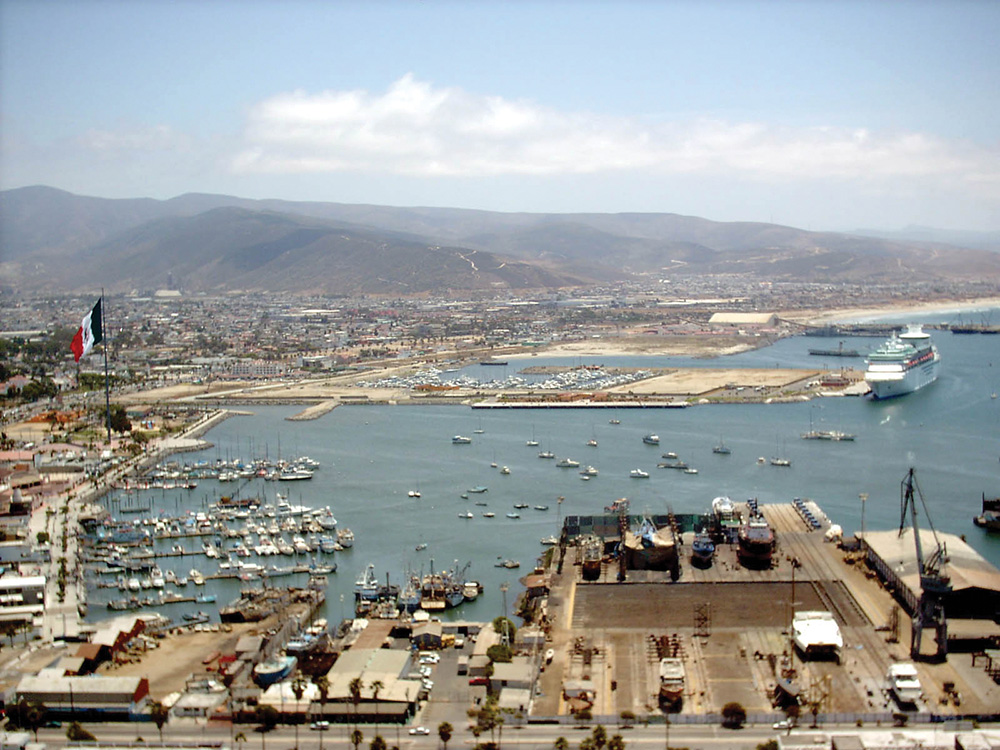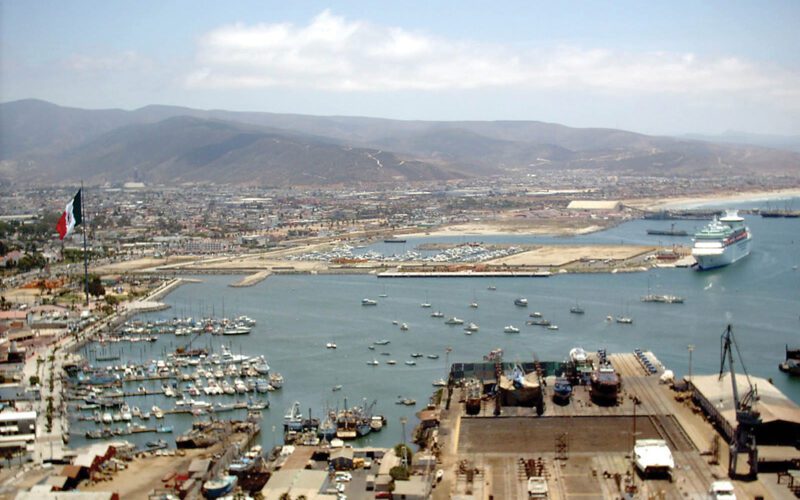
The seaports along Mexico’s Pacific coast generally don’t receive a lot of attention north of the border in the United States, but although they’re typically smaller and not as high profile, some of them are as bustling as their counterparts elsewhere in North America.
Part of the reason why is the country’s blossoming manufacturing industry. Mexico has 16 international seaports allowing for the expedited arrival and departure of goods. Baja California, a Mexican state south of California, is home to five of those international seaports—Ensenada, Isla de Cedros, Rosarito, Sauzal de Rodriguez and San Felipe—all of which except Isla de Cedros, are located on the Pacific coast.
The most well-known is the Port of Ensenada, which is known primarily for its cruise terminal.
PORT OF ENSENADA
The Port of Ensenada, located about 50 miles south of the U.S.-Mexico border is a popular cruise destination, particularly for Americans living on the West Coast.
One issue that has hindered the port’s cruise industry is something that occasionally grips large parts of Baja California —violence.
In August, Carnival Cruise Lines cancelled its calls at the Port of Ensenada for a time following a weekend of vandalism and looting in Baja – the peninsula in Western Mexico that borders California. In the city of Ensenada, two cars were reportedly hijacked and burned, part of a weekend that included a total of 24 vehicle burnings by drug gangs, according to state police.
According to the office of Ensenada’s mayor, Armando Ayala Robles, Carnival and other cruise lines threatened to cease operations in Ensenada unless security measures for passengers were enhanced following the violence, which has been attributed to criminal cartels.
But after the violence died down, the mayor said he had received assurances from Carnival Cruise officials during a conference call that they would continue to call at Ensenada, following promises by government officials that security measures for passengers would be enhanced.
“I’m very happy they confirmed the rest of their scheduled arrivals and they trust in the actions we’ve implemented,” Ayala Robles said at the time, according to local media reports.
Royal Caribbean also canceled scheduled stops in Ensenada, but as of early September had yet to resume operations at the port. As of press time, there were no reported major incidents involving crime or violence against cruise passengers in Ensenada.
Cruise ship stops in the city had resumed only recently following the COVID-19 pandemic and power struggles over control of the port brought on by organized crime, an issue that has plagued other ports throughout Mexico.
As of the publication time for this magazine, Oceania Cruises, Disney Cruise Line and Celebrity Cruises all had calls planned to the Mexican port in September.
In addition to cruises, the Port of Ensenada has access to crucial international shipping routes due to its position near the U.S. border and Pacific Rim, linking it with 64 ports in 29 countries. It covers 9,000 square miles and contains six multipurpose wharves for handling all types of cargo.
Ensenada is the port with the highest commercial activity in the national Pacific, and supports manufacturing in the border city of Tijuana by enabling imports and exports to and from countries such as China, Costa Rica, Guatemala, Jamaica, Japan, Nicaragua, Panama, Venezuela and of course, the U.S. – via its Pacific Basin entrance.
The city of Ensenada’s economy also relies on agriculture and livestock rearing. Olives and grapes are produced in the area, while the majority of cotton is exported to Asian countries and the United States.
Other exports include limestone, crushed rock, bagged stones and sand. Fertilizer is a main import, with it arriving from Asia, Nicaragua and New Zealand.
PORT OF ISLA DE CEDROS (CEDROS ISLAND)
The port on Isla de Cedros, or Cedros Island in English, serves to disembark mineral salt exported to Japan. Prior to the pandemic, the facility saw an annual load of well over 10 million tons.
There’s a salt-transshipment facility on the island where salt from the Guerrero Negro salt evaporation ponds on the Baja California peninsula is taken by barge to a deepwater salt dock at the south end of Cedros Island, where it is loaded onto ships for export.
COVID-19, however, has drastically altered the port’s tonnage, according to data from Statista, a Germany-based provider of market and consumer data that has offices in New York City.
During the last three pre-pandemic years – 2017, 2018 and 2019 – the port’s throughput was 14.01 million, 13.89 million and 13.48 million metric tons, respectively. However, in the last two full years since COVID has affected global commerce, the port’s throughput has been 1.03 million metric tons and 730,000 metric tons, data show.
In 2022, the port saw about 910,000 metric tons through the first eight months of the year, making it on pace to is on pace to eclipse 1.3 million metric tons during the calendar year, according to Statista.
PORT OF ROSARITO
Rosarito, another coastal city located on the Baja California peninsula, is the westernmost city in Mexico. Although it’s primarily known as a tourist destination, the city is also home to the Port of Rosarito. Located 12 miles south of the U.S. border, the port serves as a terminal for oil products.
The relatively small port generally handles under 3 million metric tons of cargo annually. In 2020, the latest full year for which data is available, the port handled 2.34 million metric tons, which wasn’t a steep decline from the last full pre-pandemic year of 2019, during which 2.47 million metric tons of cargo of cargo was handled, according to Statista data.
The highest amount of tonnage handled between 2014 and 2020 was 2.85 million metric tons in 2016, followed by 2.73 million in 2017 and 2.7 million in 2015.
SAN FELIPE PORT
Located on the Sea of Cortes, 124 miles south of the U.S. border, San Felipe is known as a fishing town, and it’s port is used primarily for fishing, as well as activities for mostly American tourists.
The medium-sized port only has occasional vessel calls by cargo ships. The maximum length of the vessels recorded to having entered this port is 21 meters, or just under 69 feet.
As of publication time, the most recent cargo vessel to call the port was the m/v Dona Aurora, an 82-year-old, Mexico-registered fishing vessel.
The port was temporarily left without communications in mid-September due to heavy rains from Tropical Storm Kay.
SAUZAL de RODRIGUEZ PORT
The town of Sauzal de Rodriguez, another tourist destination, is home to a port located six miles north of Ensenada that serves as the terminal for cabotage and to develop industrial and trading activities through the transportation of semi-finished products.
The port is adjacent to an industrial park for the manufacturing of finished goods, which includes a shipbuilding and repair facility, Shipyard Servicios Portuarios.

